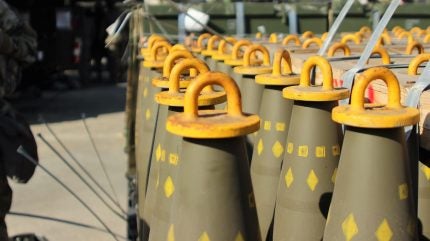
The US Department of Defense (DoD) has disagreed with a key recommendation made by the US Government Accountability Office (GAO) to improve end-use monitoring of military equipment provided to Ukraine.
According to the latest figures provided by the DoD, the US has committed over $44.9bn in security assistance to Ukraine since the beginning of the Biden Administration, including more than $44.2bn since Russia’s large-scale invasion on 24 February 2022.
Equipment provided include a full range of capabilities required for combat operations, mainly in the land domain, with smaller contributions for the maritime and air sectors.
Examples of this include dozens of main battle tanks (MBT), including 31 M1A1 Abrams and 45 T-72B MBTs, 186 Bradley infantry fighting vehicles, 189 Stryker armoured personnel carriers (APC), 300 M113 APCs, and more than 2,000 High Mobility Multipurpose Wheeled Vehicles (HMMWVs).
Artillery and long-range fires system provided to Ukraine include 31 High Mobility Artillery Rocket Systems (HIMARS) platforms and 198 155mm towed howitzers, along with millions of rounds of artillery ammunition.
More controversially, the US has also provided Ukraine with an unspecified number of dual-purpose improved conventional munitions, or DPICM. A DPICM is effectively a cluster bomb, a weapon banned by more than 100 countries around the world for the immense threat they carry for civilians both during war time and long after a conflict has ended.
A recent security assistance package announced to be provided to Ukraine included additional DPICM weapons.
US DoD disagrees with GAO on Ukraine equipment end-use monitoring
The GAO report stated that the US DoD had been delivering equipment to Ukraine “rapidly”, sometimes taking days to complete deliveries that typically take weeks. However, the DoD does not have “clear guidance” for tracking equipment deliveries, and of the data it does have, it “may not be accurate”, the GAO found.
Most of the equipment provided to Ukraine has followed the Presidential Drawdown Authority (PDA) mechanism, which enables the US President to transfer equipment from US stocks to Ukraine, as well as some funding through the Ukraine Security Assistance Initiative (USAI), and Foreign Military Financing, particularly in the early stages of the Ukraine-Russia war.
To streamline deliveries, the DoD established “new entities” using the PDA and ASAI but had “not fully documented the roles of responsibilities” of the new structure, the GAO found.
Further, a lack of equipment delivery specificity led to instances of equipment being recorded as having been delivered when they were in transit, potentially “weeks” before they actually arrived in Ukraine.
Perhaps of most concern in the GAO report was the disclosure that while the DoD has a programme to monitor the end of use of all equipment provided to Ukraine, it had been “unable to directly observe some sensitive defence articles” and had “allowed Ukrainian officials to self-report the status of such articles”.
To this end, the GAO issued a series of recommendations for the DoD in order to ensure that it is able to track deliveries and “better understand the equipment use case” when in the hands of Ukrainian military personnel.
Among this included the recommendation that the DoD “improve the accuracy of defence article delivery data” and to “evaluate its end-use monitoring approach” in Ukraine.
In its report summation, the GAO report said that while the DoD “agreed with five recommendations and partially agreed with two”, it had “disagreed with a recommendation to clarify guidance for documenting alleged end-use violations”.
Ukraine war in the balance, Russia on the advance
The provision of military equipment and funding to Ukraine has become a highly political topic in the United States, with $60bn in financial assistance currently shelved as Republican lawmakers seek to extract concessions from Democrat counterparts before signing off on the package.
Without this funding, which has been delayed for more than three months, Ukraine’s supplies of military equipment, in particular ammunition, have dwindled. As a result, Russia has regained the initiative on the battlefield, and is advancing across six axes of attack in the east and south of Ukraine.
Even if the funding were to be approved, the delay in providing Ukraine with the necessary equipment it needs to keep numerically superior Russian forces at bay is already having a profound impact on Kyiv’s prospects through 2024.




